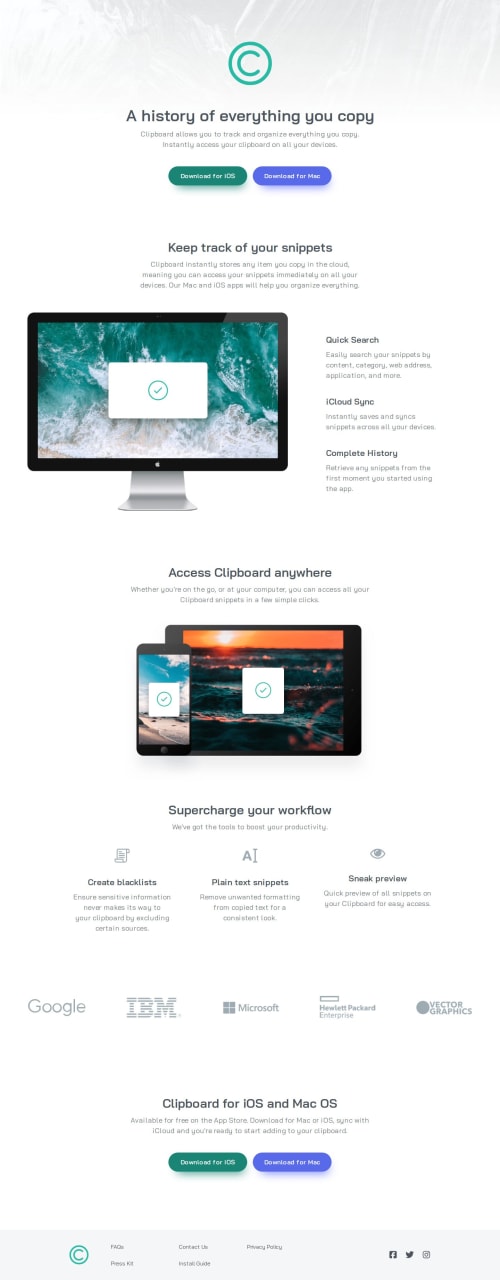Clipboard landing page (no libraries)

Solution retrospective
I am very satisfied with the following:
- lean HTML structure
- no need to use inline styles
- implementation of social media icons with SVG
Things I will do differently:
- typeface implementation - this time I used classes, but I don't like the repetition, so I want try something different;
I found challenging to implement a fluid responsive layout using flex without using max-width values.
I noticed, once again, the color contrast provided in the design was insufficient for WCAG 2 AA, so I created alternatives.
I am intentionally not using CSS nesting because it's something done by post-processing tools, and at the moment I don't want to complicate the toolchain.
What specific areas of your project would you like help with?I kindly request some help in achieving full fluid/responsive layout without any kind of query (being @container or @media).
I would like to see the minimal skeleton necessary (without negative margins, relative positioning) what maintains the current design, but as we move from 320px to 2000px of viewport's width, the elements position themselves and preserve their maximum design's width.
Thank you!
Please log in to post a comment
Log in with GitHubCommunity feedback
No feedback yet. Be the first to give feedback on Emanuele Fabrizio's solution.
Join our Discord community
Join thousands of Frontend Mentor community members taking the challenges, sharing resources, helping each other, and chatting about all things front-end!
Join our Discord